Rebecca & Matias
Things To Do & Vacation Ideas
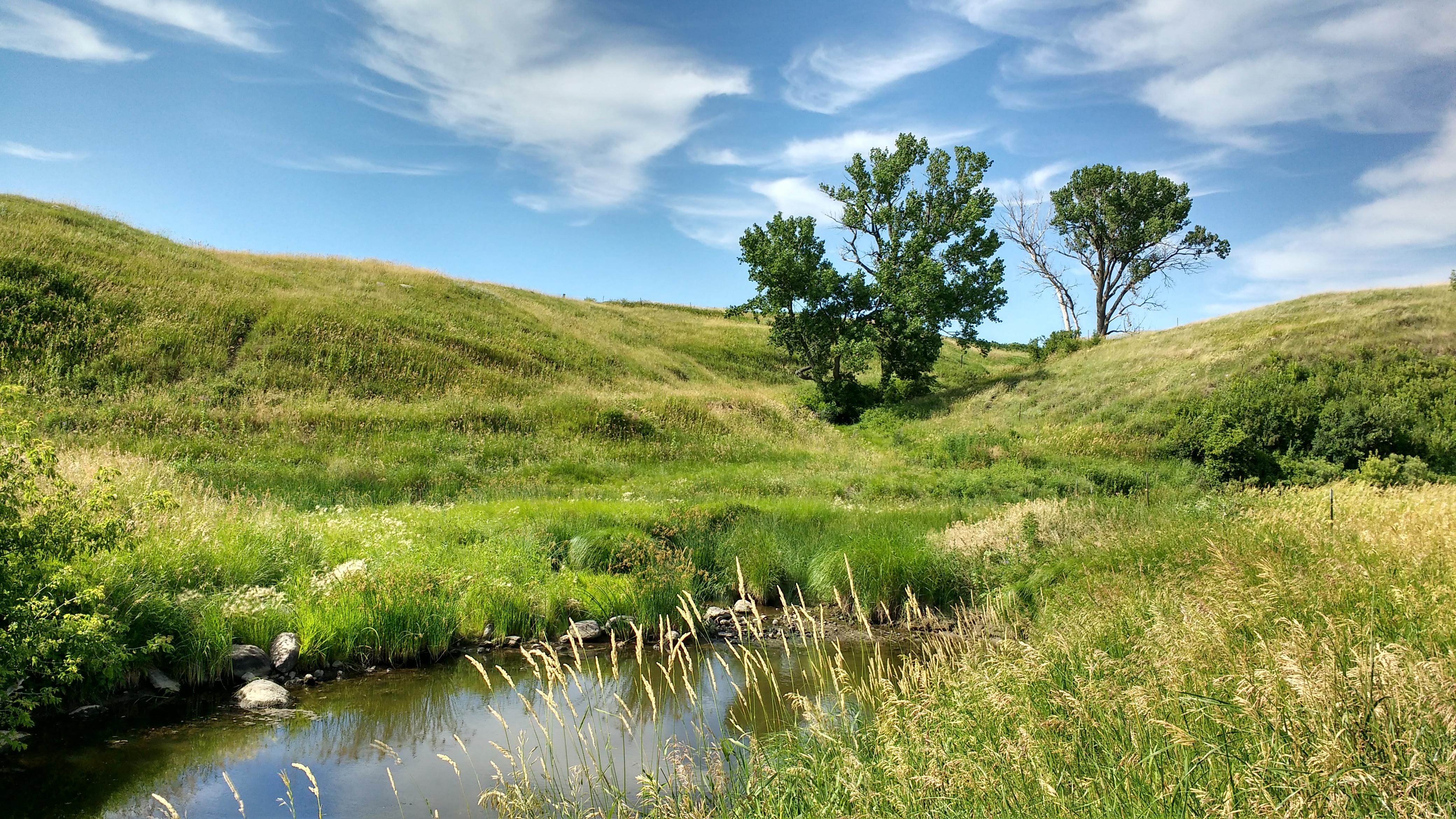

South Dakota
South Dakota really does have something for everybody. Sprawling prairies, fertile farmland and glacial lakes dominate the landscape in eastern South Dakota. Prairies and ranchland are common in central South Dakota. Mountains grace the western skyline, and in the southwest, striking Badlands formations rise abruptly from the surrounding prairie. The Missouri River runs through the central and southeastern part of the state. Lakes formed by retreating glaciers thousands of years ago cover the northeastern corner of South Dakota. If you are planning to explore our great state click "VIEW" to browse the digital South Dakota 2019 Vacation Guide, which provides detailed information on what you need to know to plan a vacation to South Dakota. If you prefer a physical copy of the South Dakota vacation guide, you can request a free copy using the following address https://www.travelsouthdakota.com/request-free-vacation-guide
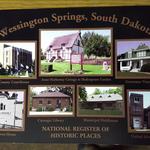
Wessington Springs
From its stunning foothills through which natural springs flow to the town’s eight sites on the national historic register, Wessington Springs is a charming, vibrant city in the center of South Dakota. Known for its world-class pheasant hunting, Wessington Springs also offers visitors and residents abundant recreation opportunities such as camping, a 9-hole golf course, public swimming pool, hiking and fishing.

The Old Grade Nature Trail (Wessington Springs)
The Old Grade Nature Trail is one of three nature and historic trails available to hike, bird watch, and learn about historical events that took place in the area, and Rebecca's favorite place to go for a run. Maps are located in the information cabin (located in the south east corner of the park), at the trail heads (one on Alene Ave. S and one on Lookout Hill off Hwy 34), or in the foyer of City Hall.

Shakespeare Garden (Wessington Springs)
While visiting Wessington Springs, be sure to take a walk in the beautiful Shakespeare Garden. and see the Anne Hathaway Cottage, built to resemble the original Stratford-on-Avon in England. It is the only structure with a thatched roof in South Dakota. The garden is open to the public during daylight hours. An appointment is needed to tour the Cottage.
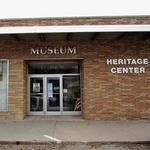
Jerauld County Pioneer Museum (Wessington Springs)
The Jerauld County Pioneer Museum complex consists of the Jerauld County Heritage Center, Fagerhaug one-room school and Kraft Blacksmith and Repair Shop on the courthouse lawn. View hundreds of items depicting the life of the pioneers.

1905 Opera House (Wessington Springs)
The restored 1905 Opera House has housed motion pictures, roller skating, trapeze acts, plays, dances, concerts and was even used as the City Fire Hall for a period. It is on the National Register of Historic Places. This is where we are having the wedding!!
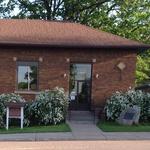
Carnegie Library (Wessington Springs)
The Wessington Springs Library is a Carnegie library built in 1917-18. It is Prairie School in style. A Carnegie library is a library built with money donated by Scottish-American businessman and philanthropist Andrew Carnegie. It is one of the only Carnegie libraries in South Dakota still being used as a library. It was listed on the National Register of Historic Places in 1999.
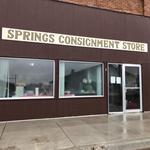
Wessington Springs Consignment Store (Wessington Springs)
If you like consigning you will love the Springs Consignment Store. The store is run by the Springs Area Community Club. The hours of business are Monday’s 1:00 to 5:00, Wednesday and Friday 12:00 to 5:00 and Saturdays 9:00 to 1:00. They have clothes, craft items, household items, furniture and lighting. This is one of Rebecca's favorite places to shop in Springs!

Springs Inn Cafe and Lounge (Wessington Springs)
Springs Inn Cafe and Lounge is a locally-owned and -operated, family-friendly restaurant serving home-style food and delicious homemade pies. Enjoy the lunch buffet and salad bar every Tuesday and Thursday. There is spacious seating for 220, including a large banquet/meeting room. We offer a full menu of steak, seafood, salads and soups.

Sweet Grass (Wessington Springs)
Sweet Grass is a Wessington Springs eatery that serves unique, made-from-scratch cuisine – from comfort foods to upscale fare and wine pairings – in a restored 100-year-old historic building with an atmosphere that matches that of a big city. They also feature a coffee shop, bakery and a full bar.
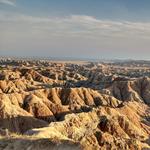
Badlands National Park
The Badlands are a truly amazing landscape, and one of Matias' favorite places in South Dakota. If you are going to make your trip to South Dakota into a vacation, then the Badlands are a MUST! They are less than a 3 hour drive from Wessington Springs, SD. Take in sweeping vistas of otherworldly landscapes and stunning panoramas of vividly colored buttes, pinnacles, spires and canyons at Badlands National Park. The 244,000-acre park—once known as Mako Sica (a Lakota phrase meaning “land bad”)—features eroded land formations, revealing multicolored layers of various rock types: shale (purple and yellow), sand and gravel (tan and gray), iron oxides (red and orange) and volcanic ash (white). While you’re here, drive the Badlands Loop State Scenic Byway and keep your eyes open for an array of wildlife including bison, eagles, coyotes, pronghorn and more.

Badlands Region - Lodging Options
There are several lodging options when visiting the Badlands, including hotels, cabins, and camping. Most of these options are located near Wall and Interior, SD. On our last trip we rented a cabin at the Badlands / White River KOA in Interior, SD. https://koa.com/campgrounds/badlands/

National Grasslands Visitor Center - USDA Forest Service (Badlands Region)
The USDA National Grassland Visitor Center is another great stop to learn more about the prairie grasslands. The visitor center charges no admission fees. In the Exhibit Room, visitors discover displays on wildlife, Great Plains history, grazing management, human artifacts, grassland ecosystems and more.
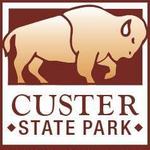
Custer State Park (Black Hills - Southern Region)
Custer State Park, which is celebrating 100 years in 2019, is one of the few truly wild places that remain in this country. Towering pines, gentle creeks and massive granite outcroppings sprawl throughout the park’s 1,000 acres. The quintessential icon of the American West and our national mammal, the bison, remains the unchallenged master of this wild world. The park is also home to the Black Hills Playhouse, one of the oldest, continuously running summer theaters in the country. For detailed information on the 2019 season, visit BlackHillsPlayhouse.com.
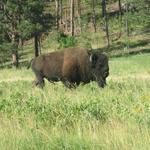
Custer State Park - Wildlife Loop Road Scenic Drive (Black Hills - Southern Region)
Your best chance for seeing buffalo is on Wildlife Loop Road, a 19-mile roadway that winds through the southeastern part of the park. It takes about one and a half hours to complete, unless you run into a buffalo jam. You’ll likely come across other critters, like prairie dogs, whitetailed and mule deer, pronghorn antelope, mountain goats, elk, bighorn sheep and the park’s infamous begging burros. There’ll be plenty of opportunities for one-of-a-kind photos.

Custer State Park - Peter Norbeck Scenic Byway (Black Hills - Southern Region)
Needles Highway (SD 87), Iron Mountain Road (US 16A), Horse Thief Lake Road (SD 244) and Sylvan Lake Road (SD 89) make up the oval-shaped route through the most rugged real estate in the Black Hills. The route includes picturesque lakes, towering granite formations, six picture-perfect tunnels, hairpin curves, “pigtail” bridges, and the wildlife ranges of Norbeck Wildlife Preserve, Black Elk National Wilderness Area and Custer State Park. You’ll encounter steep grades, sharp curves and tunnels with height and width restrictions.

Mount Rushmore National Monument (Black Hills - Southern Region)
Majestic figures of George Washington, Thomas Jefferson, Theodore Roosevelt and Abraham Lincoln, surrounded by the beauty of the Black Hills of South Dakota, tell the story of the birth, growth, development and preservation of this country. From the history of the first inhabitants to the diversity of America today, Mount Rushmore brings visitors face to face with the rich heritage we all share.
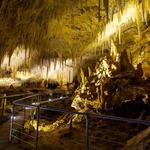
Jewel Cave National Monument (Black Hills - Southern Region)
With a name derived from the crystals that line its walls, Jewel Cave National Monument is even more significant as the third-longest cave in the world. Features of this South Dakota attraction include a variety of cave tours below the forest, and a 1,279-acre park with nature trails above ground.
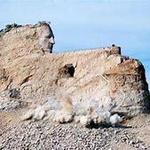
Crazy Horse Monument (Black Hills - Southern Region)
Korczak Ziolkowski began work on Crazy Horse Memorial in 1948. Once complete, this tribute to the Lakota leader will be the largest mountain carving in South Dakota, and the world. The on-site Indian Museum of North America and the Native American Educational & Cultural Center also provide educational and cultural programming.
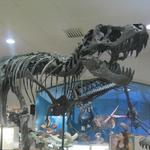
Museum @ Black Hills Institute ( Black Hills - Southern Region)
If you like dinosaurs then this is the place to stop. The Museum @ Black Hills Institute contains an extensive collection of dinosaurs (including a T. Rex found in South Dakota), marine fossils, minerals, meteorites and area paleontological historical displays.
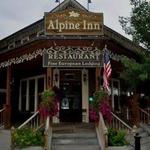
Alpine Inn Restaurant (Black Hills - Southern Region)
If you happen to be in Hill City the Alpine Inn is a great place to stop and eat. Built in 1886, this historic landmark and its reputation for fine dining, became the showplace of Hill City. Family-owned and operated, the Alpine Inn carries on this tradition. The luncheon menu boasts both ethnic European and contemporary dishes. The streamlined evening menu features filet mignon and homemade desserts (our favorite is the bread pudding!!!).
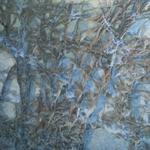
Wind Cave National Park (Black Hills - Hot Springs Region)
The first cave to be designated a national park, Wind Cave National Park features the world's largest concentration of rare boxwork formations along with a 28,295-acres of South Dakota wildlife sanctuary on the surface.
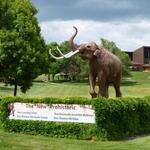
Mammoth Site (Black Hills - Hot Springs Region)
The Mammoth Site of Hot Springs is an active paleontological dig site, which boasts the largest concentration of mammoth remains in the world! Their current mammoth count is 61, with 58 Columbian and three woolly mammoths.
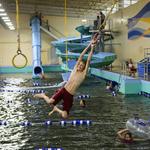
Evans Plunge Mineral Springs (Black Hills - Hot Springs Region)
Established in 1890 in Hot Springs, Evans Plunge is the oldest tourist attraction in the Black Hills. You can swim, splash and soak in the 87-degree mineral water. A natural thermal spring provides the crystal-clear, scentless water for the pool. There also is a jet slide, a whale slide, two kids’ pools, a frog slide, two hot tubs, a sauna and a steam room, plus concessions and a gift shop.
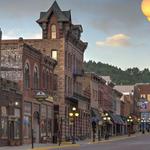
Deadwood, SD (Black Hills - Northern Region)
Deadwood, a National Historic Landmark, once drew legions in search of their fortune. Characters like Wild Bill Hickok and Calamity Jane made this town legendary. Today you can watch shootouts on Main Street, re-enactments of the slaying of Wild Bill Hickok, and the trial of his murderer. Behind the history is plenty of modern-day fun like 24/7 gaming, day spas, fine dining, shopping, resort hotels, outdoor adventures and more. Some of our favorite spots in Deadwood include: Walking down Main Street; the Days of '76 Museum; the Historic Adams Museum; the Adams House; and the Tatanka: Story of the Bison Museum.
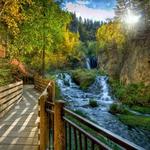
Roughlock Falls and Spearfish Canyon (Black Hills - Northern Region)
The breathtaking limestone palisades of this creek-carved gorge are more ancient than the Grand Canyon – albeit much closer together. Once accessible only by horseback, Spearfish Canyon’s narrow, 1000-foot walls are among the most spectacular scenery in the Black Hills. Spearfish Canyon is the Northern Hills' number one natural attraction. A great spot for wildlife enthusiasts, as the diverse array of plant life, provides a comfortable home for deer, mountain goats, porcupines and bobcats, Spearfish Canyon is also a place for outdoor enthusiasts. Rock climbing, biking, hiking, and fishing are just a few of the activities that visitors and residents utilize this natural wonder for.
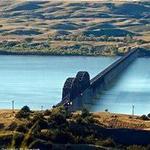
Missouri River
Missouri River is the longest river in North America. The Waterway is ranked the world’s 15th- longest river at 2,341 miles. The body of water divides South Dakota into what most residents of the state refer to as East River and West River. Popular nicknames for the Missouri include “Big Muddy” and the “Muddy Mo.” In South Dakota the river has been divided into four different reservoirs; Lake Oahe, Lake Sharpe, Lake Francis Case, and Lewis and Clark Lake. These reservoirs are separated by hydroelectric dams. Major cities the “Big Muddy” flows through or by in SD are: Pierre, SD; Chamberlain, SD; and Yankton, SD. There are many campgrounds and resorts along the Missouri River. The Missouri has some of the most varied fish species in the area. These fish species include walleye, northern pike, lake trout, salmon, paddle fish, catfish, sturgeon, and much more.
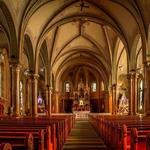
Cathedral of the Prairie
In a small prairie town in north-central South Dakota stands a cathedral that can be seen from miles away. The unique magnificence of this “big church in a little town” is what makes it one of South Dakota’s Great Places. Saint Anthony’s ‘Cathedral of the Prairie,’ located in Hoven, S.D., was completed in 1921 at a cost of $250,000. The value of the church is now estimated at $20 million. The church, believed to be patterned after churches typically found in Bavaria, boasts an intricate and ornate design that rivals any church for miles. Although Hoven’s population is only 600, people come from around the world to attend Mass at the famous church. The sanctuary seats more than 1,000 people, and the church is listed on the National Register of Historic Places under the original parish name of St. Bernard’s.
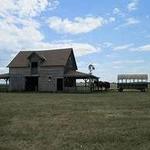
Ingalls Homestead
On the quarter-section of land Laura Ingalls Wilder's family homesteaded, visitors experience South Dakota pioneer heritage through hands-on activities. Ride the covered wagon across the prairie to a one-room schoolhouse session. Make corncob dolls and ropes, see demonstrations of hay twisting and wheat grinding, drive a pony cart, wash clothes, and interact with farm animals. Camping is available, including covered wagons, a bunkhouse, RV sites and tent camping. Hours are 9 a.m.-7 p.m., daily.



